Author: Wayne Parham
2025 Show Reports
This was our 20th year! It was so exciting to combine the 20th anniversary of LSAF with the 1st year partnership with T.H.E! I personally thought the combination was excellent, and chatting with many of the LSAF regulars gave me the distinct impression that we all thought the same thing. This show rocks!
I’d love to hear what you think too! You can connect with us on most social media outlets or on the LSAF discussion forum, which is free to join. Tons of photos and discussion there already – both in social media and on the LSAF forum – so join in! Let us know your thoughts!
Before I comment further on THELSAF 2025, I want to give a big shout-out to Emiko Carlin and her intrepid crew at T.H.E. They have brought some things that LSAF would not have done on its own. In particular is T.H.E. film festival and the IASCA sound quality competition. Other things T.H.E. staff has done include interviewing all exhibitors and tirelessly promoting the show using various flavors of social media platforms.
So downstairs on the first floor, there were some “big show” activities that are unique to T.H.E show events. In addition to their film festival and the high-end quality car exhibits, there were large rooms for high-end exhibitors that wanted the extra show space and there was a large marketplace area with booths.
For those of us upstairs in the suites, the show retained its traditional Lone Star Audiofest vibe. We have a mix of high-end vendors with kit manufacturers and other types of product offerings.
My impression of the 2025 show is very much like all the years before. Traffic was a little higher, I think. Maybe 20% more. But other than that, the “feel” of the show this year was very much the same. To tell the truth, I love that.
Exhibitor rooms were packed all day Saturday. Friday was thinner, as it always is. What was most surprising was Sunday. It was almost as packed as Saturday. That’s not been the case in years past.
And everyone else told me they had a very positive experience too. So much so that we have already committed to doing it again here next year.
Sweet!
I would be remiss if I failed to give a respectful nod to my fellow LSAF exhibitors. Our show may be small and relaxed, but that’s largely because we are a group that appeals to a niche segment. Not only are we audiophiles, but we are passionate technical hobbyists. We are a niche within a niche.
Most Lone Star Audiofest exhibitors are craftsmen and engineers making the best products they can make. We all “geek out” here and gush about our pet projects. Our intensity shows, and you can tell we’re perfectionists. But there’s a camaraderie evident – we’re all kindred spirits.
To use a hot-rod car analogy, exhibitors at LSAF are like guys building eight-second street cars. You can’t just go buy a car that runs an eight-second quarter mile. You have to know what you’re doing, and you have to do it yourself or have an engineering staff to design performance upgrades. The equivalent of that in audio is who exhibits at the Lone Star Audiofest.
You can buy plenty of ten-second cars. You can spend millions buying a Koenigsegg Jesko or a Rimac Nevera. Or you can buy a high-end McLaren, Ferrari, Lamborghini or Porsche. You can spend even more adding custom features, styling or aesthetics. But none of those will get you south of nine seconds in the quarter mile.
Some audio shows cater to the super-expensive high-end audio crowd. There’s really cool drool-worthy stuff at shows like that. If you want a really nice and attractive sound system and are willing to spend several hundred thousand or even millions, you can see some examples of sound systems that might suit you there.
But to go back to the car analogy, those won’t do eight-second quarter mile times.
One could argue that great cars don’t have to be fast enough to do a standing quarter-mile in eight seconds. One could even argue that a good car won’t launch that hard. I would suggest that is true for some, but not for everyone.
Different strokes for different folks.
Anyway, I think my point is I like the Lone Star Audiofest and its exhibitors and participants better than any of the other audio shows. It’s just so cool.
Exhibitor List
First floor:
- MarketPlace Booth 1 – Bob’s Devices
- MarketPlace Booth 2 – Miller Audio
- MarketPlace Booth 3 – Wizard Sounds
- MarketPlace Booth 4 – Longboard Luv Audio
- MarketPlace Booth 5 – Pilot Radio
- MarketPlace Booth 6 – Audio Foundations
- MarketPlace Booth 7 – Audio Foundations
- MarketPlace Booth 8 – Pyramid Audio
- MarketPlace Booth 9 – Audiophile Directory
- Bluebell Room – Audio Mirror
- Bluebell Room – Sadurni Acoustics
- Bluebonnet Room – PBN Audio
- Lantana Room – Sound Sanctuary
- LongHorn Room – Origin HiFi
- Verbena Room – Innovo Audio Designs
- Highlands Room – T.H.E. Film Festival
- Outdoors – IASCA Sound Quality Competition
Second floor:
- Room 204 – JPorter Studios
- Room 206 – Joey G’s Audio Channel
- Room 213 – Van Zyl Audio
- Room 216 – Raven Audio
- Room 217 – Audio Crafters Guild and PureArtFi
- Room 220 – Origin HiFi
- Room 223 – Uilleam Audio
- Room 226 – Brane Audio
- Room 227 – Toby Speakers
- Room 228 – Audio Geeks
- Room 229 – Pi Speakers
- Room 230 – Canvas HiFi
- Room 233 – JWM Acoustics
Video Interviews and Seminars
One of the coolest things that Total Hifi Experience (T.H.E.) brings to the Lone Star Audiofest experience is their production of video interviews and seminars. These videos bring you the latest information on technologies and offerings available from each of the LSAF exhibitors.
Here is a list of those interviews:
- Scotty Lylander interviews Bryan Miller of Miller Audio, March 17, 2025
- Brian Green interviews Peter Noerbaek of PBN Audio, March 10, 2025
- Daryl Sansevero interviews Bryan Miller of Miller Audio, February 27, 2025
- Brian Green interviews Johan Van Zyl of Van Zyl Audio, February 24, 2025
- Scotty Lylander interviews Bob Sattin of Bob’s Devices, February 17, 2025
- Brian Green interviews Vladimir Bazelkov of Audio Mirror, February 10, 2025
- Scott Lylander interviews Yair Raz of Innovo Audio Designs, February 6, 2025
- Jiles McCoy interviews Norman Tracy of Audio Crafters Guild, February 3, 2025
- Emiko Carlin interviews Wayne Parham about the Lone Star Audiofest, its history and its future, January 30, 2025
We’ll continue to update this list with interviews and seminars as they drop, so check back regularly for updates.
Reserve your room
There is limited availability, and rooms and booths are on a first-come, first-served basis.
So don’t delay. The early bird gets the room!
Contact Daryl Sansevero to reserve a room, booth or marketplace space.
Big News!
Lone Star Audiofest and T.H.E. Show Announce Groundbreaking Partnership
Premiering T.H.E. Lone Star Audiofest in Austin, TX in Late Spring 2025
Austin, TX – July 8, 2024 – Lone Star Audiofest and T.H.E. Show, America’s longest-running HiFi show, are excited to announce a landmark cooperative venture. This collaboration will culminate in the premiere of a new event, “T.H.E. Lone Star Audiofest, sponsored by T.H.E. Enterprises,” set to take place in the vibrant city of Austin, Texas, in late spring 2025 (May 2-4).
T.H.E. Lone Star Audiofest aims to create a brand new unparalleled experience for audiophiles, industry professionals (both budding and seasoned), amateur hobbyists, and music enthusiasts alike, focusing on introducing the industry and community to the very best in the next generation of new, bespoke HiFi designers, DIY-builders, artisans, and engineers. Combining the rich heritage and extensive network of T.H.E. Show with the dynamic and innovative spirit of Lone Star Audiofest, this event promises to be a major milestone in the HiFi industry.
Bespoke and DIY exhibitors at the previous Lone Star Audiofests and T.H.E. Shows include JWM Acoustics, Raven Audio, J. Porter Studios, Black Ocean Audio, Infigo Audio, Pi Speakers, Austin Acoustic, AudioKinesis, GR-Research, Audio Crafter’s Guild and more. T.H.E. Lone Star Audiofest 2025 looks forward to renewing exhibits with brands from previous years as well as bringing in brand new audio designers (so if that’s you, get in touch).
About the Event:
Name: T.H.E. Lone Star Audiofest
Date: May 2-4, 2025
Location: Austin, Texas (venue announcement forthcoming)
This new venture will offer a unique opportunity for exhibitors and attendees to explore the latest in high-fidelity audio creation, discover groundbreaking products, and engage in insightful discussions with like-minded creators and attendees. With Austin’s renowned music scene and vibrant cultural landscape, T.H.E. Lone Star Audiofest is poised to become a key destination for HiFi designers, creators, and enthusiasts from around the world.
Quotes:
“Lone Star Audiofest has always been a great place for everyone in the industry to get together, and it has specialized in introducing DIYers and start-up companies into the audio community. Our word-of-mouth ‘show up and setup’ approach has garnered us great local popularity. It’s clear on the basis of exhibitor and attendee feedback that it is time for us to grow. This new show is a blending of approaches, which promises to get the word out to people that never knew we existed while allowing us to retain the laid-back intimacy that the Lone Star Audiofest has always been known for,” says Wayne Parham, Owner of the Lone Star Audiofest
“T.H.E. Show has a long-standing tradition of excellence in the HiFi industry, and we are excited to embark on this new journey with Lone Star Audiofest. Together, we will create an event that not only celebrates audio innovation but also fosters a sense of community among audio enthusiasts. And I want to be absolutely clear – this is not ‘just another audio show.’ This will be a totally different experience for exhibitors, attendees, and yes, even press who are hungry to cover new and never before heard of brands!” says Emiko E. Carlin, CEO of T.H.E. Enterprises and President of T.H.E. Show
About Lone Star Audiofest: Lone Star Audiofest is described as the “Woodstock of high-end audio shows,” because of its open-ended draw to anyone and everyone in audio. It has historically appealed to DIYers, passionate start-up companies and semi-retired industry experts that offer audio products and services. The Lone Star Audiofest has always had a laid-back feel, where the public can explore these companies, audition their products and interact directly with company owners and engineers.
About T.H.E. Show: T.H.E. Show is America’s longest-running HiFi show, dedicated to presenting the latest in high-fidelity audio, home theater, and consumer electronics. With a rich history and a strong commitment to excellence, T.H.E. Show has become a cornerstone of the HiFi industry.
Lone Star Audiofest may be found at lonestaraudiofest.com
T.H.E. Show may be found at theshownow.com
Media Contacts:
Sophie Assencoa
Rose City Media Group
Sophie@rosecitymediagroup.com
Ruminations
Ruminations about the Lone Star Audiofest
First, a brief reflection about LSAF 2024. From my perspective, the number of attendees was pretty much as it always is. I saw lots of new faces this year though. Most years, we have a bunch of regulars and a few new faces. Seemed like this year, there were more new people.
But for any of you that have attended LSAF over the years, you know how it is there. It’s a small show. I don’t think we’ve ever had more than a couple hundred attendees. Seems like we usually hover around 100 to 200. I think that’s what we saw this year too.
We may be small, but we’re the “in crowd.” We’re a bunch of passionate audio engineers and technicians, and many of us have “mad-skills” and technical chops. We’re the professionals that are cited as references, people that have written extensively and solid, well-respected audio experts. Examples are guys like Earl Geddes, James Griffin, Danny Ritchie, Pete Millett and Keith Larson.
I probably shouldn’t even have started “name-dropping” ’cause most of our exhibitors are experts in their field of specialization. My list wasn’t complete – there are many more experts at LSAF each year. We give seminars every few years, and when we do, people can get free lectures from the people that literally “wrote the book” in their audio specialization. So my point is, while LSAF is small, it’s got chops. We’re the ones that know. I’m proud of that.
But 2024 was light on exhibitors. We had some regulars that couldn’t come for understandable reasons. One of the big ones was a conflict with T.H.E. show in Los Angeles, which was my mistake from moving the show date to June. I inadvertently created a scheduling conflict with them.
However, this scheduling conflict set in motion a chain of events that has become quite interesting.
A couple months before the LSAF 2024 show, I checked on the registrations at the hotel and found that many of our regular exhibitors weren’t registered. I began to reach out, and that’s when I found out the reasons some wouldn’t be coming. That’s when I discovered that LSAF 2024 conflicted with the SoCal T.H.E. 2024 show.
I couldn’t believe I did that. So I wrote an email to the “info” email address for T.H.E. show, introducing myself and apologizing for my oversight. I also asked that we coordinate so that we didn’t have scheduling conflicts going forward. I explained that LSAF had been first weekend in May for decades, but then recently shifted to first weekend in June. I contemplated simply moving the show date back.
T.H.E. Show’s Emiko Carlin replied, thanking me for the concern and asking if we could talk by phone. It was just easier to have a discussion by phone than through email exchanges. So of course, I agreed.
She said she was intrigued by the approach of our little show, and by its uniqueness. And so she wondered whether we could maybe do some sort of cooperative venture. Rather than scheduling around each other, perhaps we could support one another’s shows, to combine efforts in some way.
To me, this is an exciting idea. For a long time, LSAF has enjoyed its unique “stone soup” show approach, but it has always suffered from a lack of exposure as a result. In contrast, T.H.E. Show is the “juggernaut” of audio shows – ever since way back when it was independently associated with the Consumer Electronics Show in the Las Vegas St. Tropez. By coordinating T.H.E. and LSAF, we might be able to gain exposure by proximity.
The problem is, of course, how to combine a “pay-to-play” show with a “stone soup” show. We discussed various ideas, like a form of tiered approach, or perhaps two separate shows in the same venue or nearby venues, or maybe having a show with an entry-level that’s low-cost but giving additional value-added services for those that can afford it.
While considering these things, we have to consider the exhibitors that participate. There are three basic types of exhibitors at LSAF:
First is the small shops, kit makers and DIY enthusiasts and support companies. My main focus is, and always has been, to support this group. They are often entrepreneurs just getting started, and/or semi-retired company owners making and selling audio gear. These are small shops that really need an affordable show. They generally sell direct and have no showroom or dealer network.
That’s the core of LSAF, and it was the driving motivation when starting LSAF. So for these guys, we need a show that gives classy but reasonably-priced suites or some other similar venue that allows the vendor to have a sleeper room and a show room at low cost. They can’t just have a booth – they need to be able to setup their demo systems. And they cannot afford advertising, so they have to promote the show and themselves by their own means.
But soon after the show began, a second type of exhibitor class appeared. Some companies grew enough that they could afford a little more and they started going to larger, more costly shows. I call this kind of LSAF exhibitor a “crossover exhibitor,” because they have grown large enough to crossover from our essentially-free show into a “pay-to-play” show. They usually continue to participate at LSAF, but they start to exhibit at other shows, like AXPONA, RMAF (when it existed) and T.H.E. show.
And of course, some companies are large enough to go to all the audio shows. That’s the third type of exhibitor. They tend to have a really polished presentation, and I find that all the other exhibitors – the “type 1 and type 2” exhibitors, by my little rubric – tend to aspire to be like the “type 3” exhibitors. These are the guys that set the standards. Everybody wants to be like them.
So our goal is to be able to support all these types of exhibitors. I am hoping we are able to leverage a relationship with T.H.E. to be able to maintain the same low-cost and intimacy that LSAF has always provided, but also to be able to benefit from the marketing and reach, and perhaps the other value-added services like live music performances, that a show like T.H.E. can offer.
Emiko Carlin seems keen to make this happen. She wants to keep the uniqueness of LSAF – we’re the only show like this, catering to DIYers with a great degree of technical skill – so I have guarded optimism we can cooperate in some way. We bring to the table something different than all he “pay-to-play” shows. But we are small, as a result of our “stone soup” show model. Emiko is a marketer, and so her T.H.E. show can bring to us some exposure, which may potentially benefit everyone.
The task at hand is how to merge them in a way that allows T.H.E. to maintain the profits it enjoys from being a traditional “pay-to-play” show while keeping the low-cost, technical zeal and intimacy of LSAF’s “stone soup” approach. We are looking at ways to develop a whole new show model that combines the best aspects of each.
Stay tuned. We’re going to create the most unique audio show there is.
Related reading:
2024 Show Reports
This year’s show was another wonderful time, but it felt a little “heavier” to me without one of its long-time regular exhibitors, John Busch. John was always at the show with some fabulous loudspeaker creations. Sadly, he passed in the summer of 2022.
John’s estate graciously offered a lot of his equipment to the Lone Star Audiofest, which we raffled Saturday evening. So many people got wonderful equipment from John, keeping his memory alive.
Beyond that, the rooms were always busy, but as usual, people were able to stay in each room for extended periods, listening to several songs and talking with each exhibitor. That’s one of the best things about LSAF, in my opinion – how approachable the exhibitors are and how easy it is to engage in meaningful discussions.
Just as importantly – or maybe even more importantly – it is wonderful to be able to sit and listen at length. It’s never a hurried thing, and you never feel that you need to get up and move along. Everyone can spend time in each room, auditioning and discussing things.
See the show reports for this and other previous shows:
2023 Show Reports
Norman Tracy – LSAF’s Positive Feedback liaison and exhibitor extraordinaire – commented that this show secured the future of LSAF. It was the first show after the corona-lockdowns and it was the first year at the new venue.
All feedback was positive, both about the venue and about the show itself. Visitor traffic was busy Friday and Saturday. Sunday was slower, as usual. Some exhibitors hung on through the afternoon, but many left by checkout time on Sunday. So – just like most other previous shows – the best weekend day to visit was Saturday. That’s the one thing that sometimes disappoints – if a new visitor shows up Sunday afternoon, they usually only get to see half the rooms.
But most of the usual exhibitors were there and a few new ones came too. There was the typical-of-LSAF mix – everything from expensive high-end to quality-obsessed DIY gear. This show brings examples of expensive high-quality gear that can be purchased, delivered and setup right out of the box, straight from the dealer. It also has examples of gear that’s equally high-end, but less expensive because it requires the purchaser’s “sweat equity” in the form of DIY plans, kits and partial kits. There’s a little bit of something for everyone at LSAF each year.
See the show reports for this and other previous shows:
LSAF – New Date, New Digs!
The Lone Star Audiofest is moving! We’ve had a good run at the Embassy Suites Park Central in North Dallas, but we’re changing venues this year.
Lone Star Audiofest will be held at the Embassy Suites Galleria in Dallas, Texas. The cost will be $129.00 per night. The parking charge is waived for LSAF exhibitors and attendees. Furniture can be moved, but it must be moved back before checkout. Alternatively, they will move furniture for you if needed for a flat-rate charge of $100.00.
It is near the Park Central property where we’ve met for the last ten years – just four miles west of it, actually. The room layouts are very similar too. So it will have much the same “look and feel” as prior shows.
One thing that’s different though: The carts are not very good for moving large equipment, so you might want to bring your own cart. You can find them at Lowe’s, Home Depot and Amazon.com for $50.00 to $200.00.
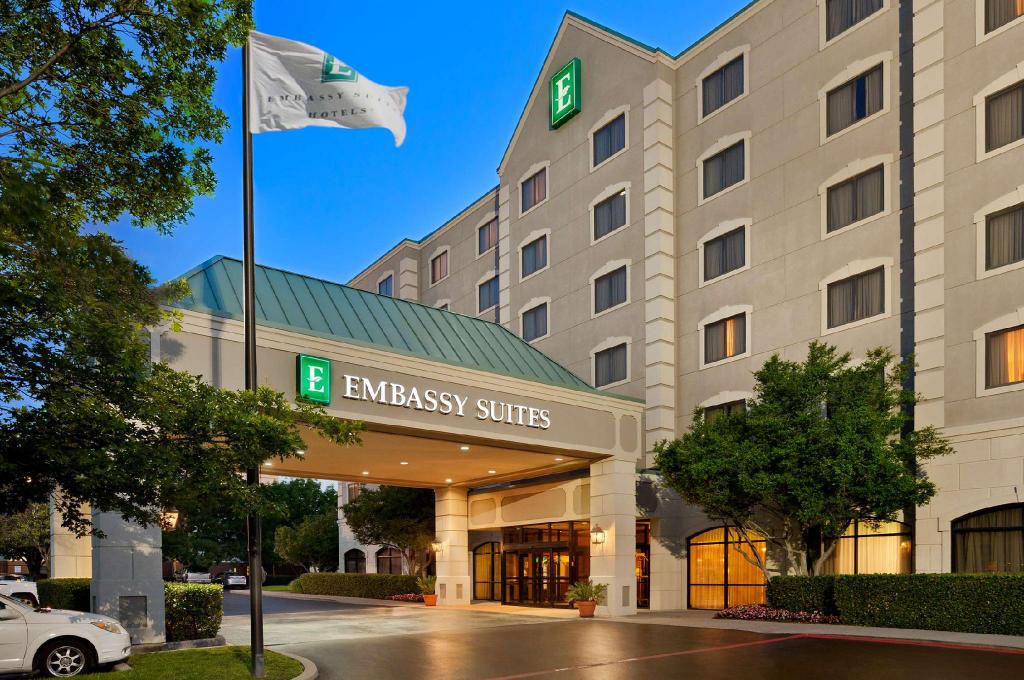
Embassy Suites Dallas Galleria

Entrance
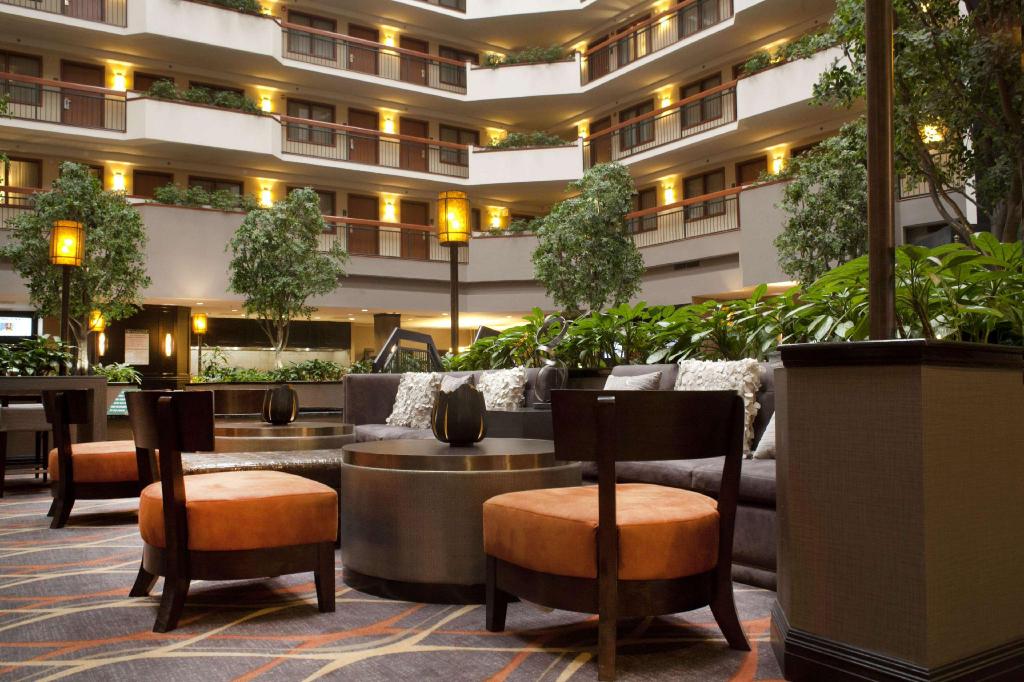
Atrium
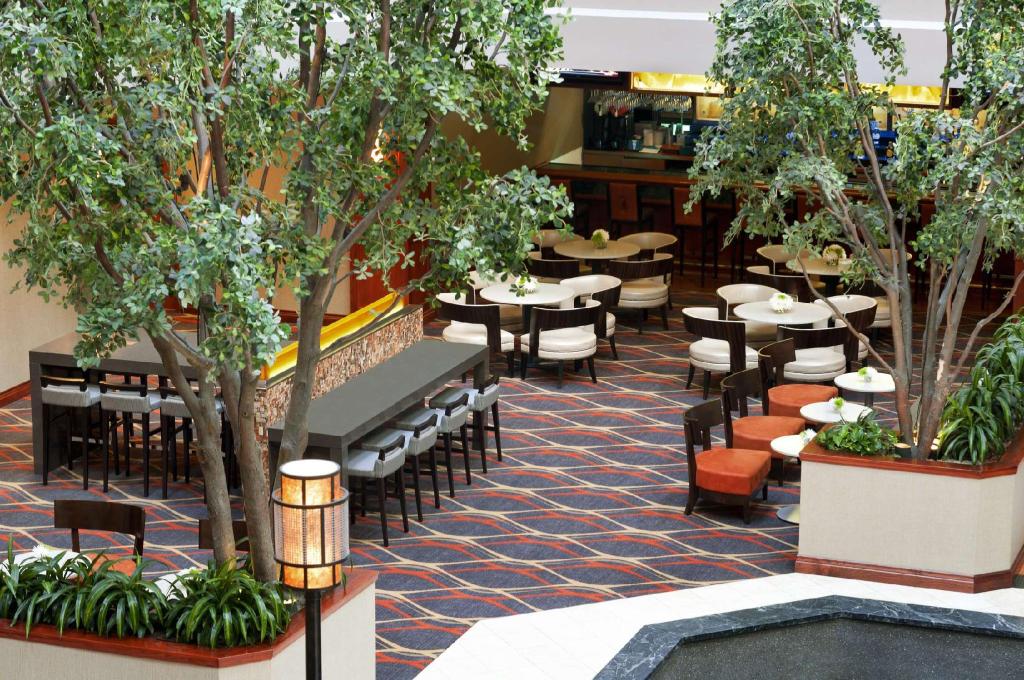
Bar, restaurant and lounge

Guest room
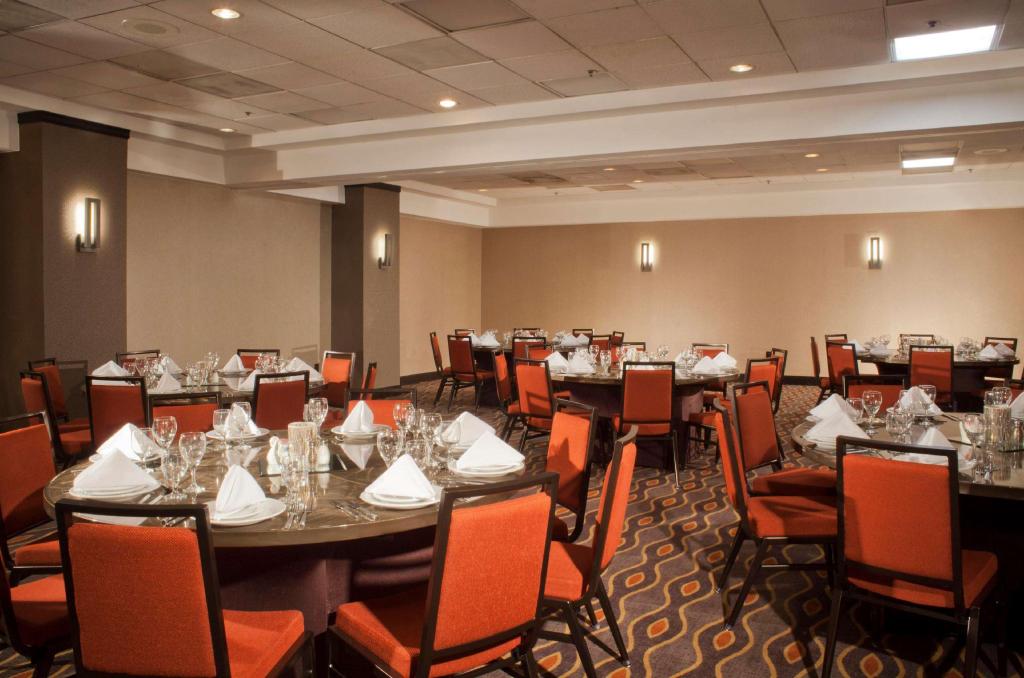
Banquet room

Meeting room
Embassy Suites Galleria Floor and Room Layout
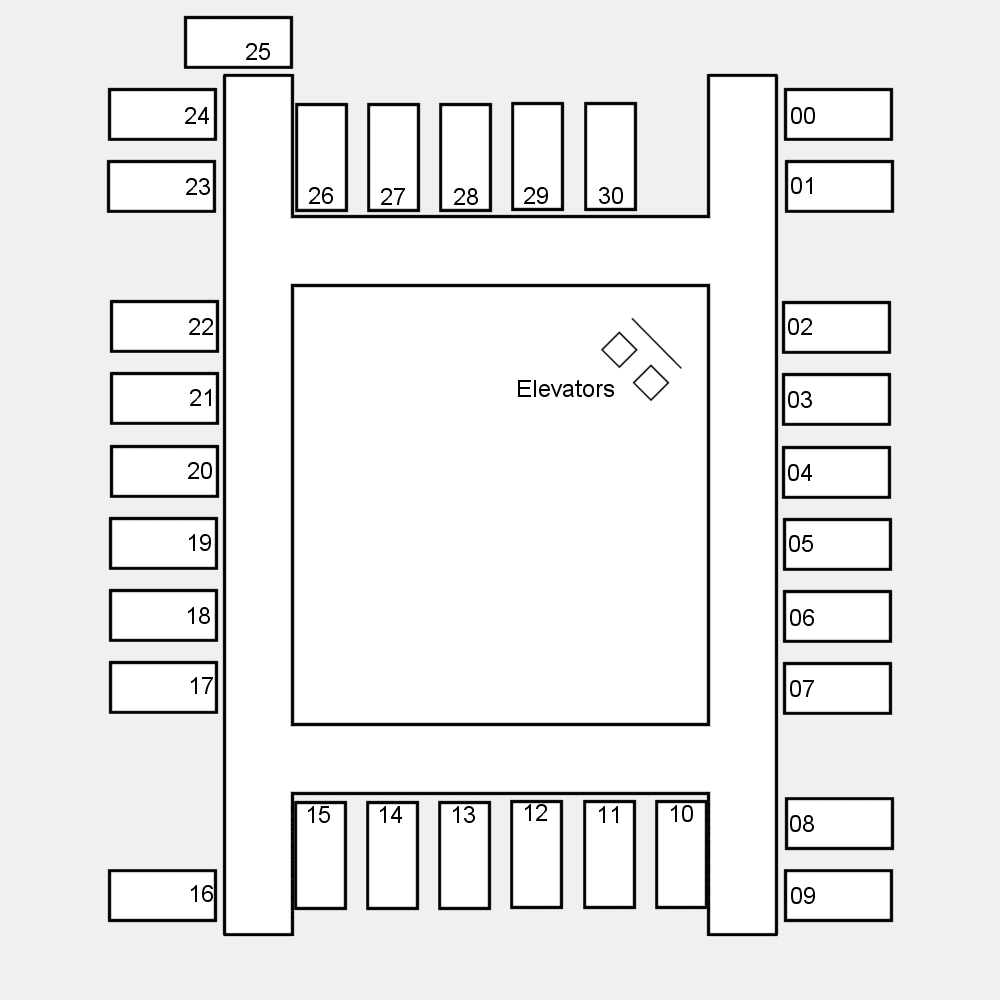
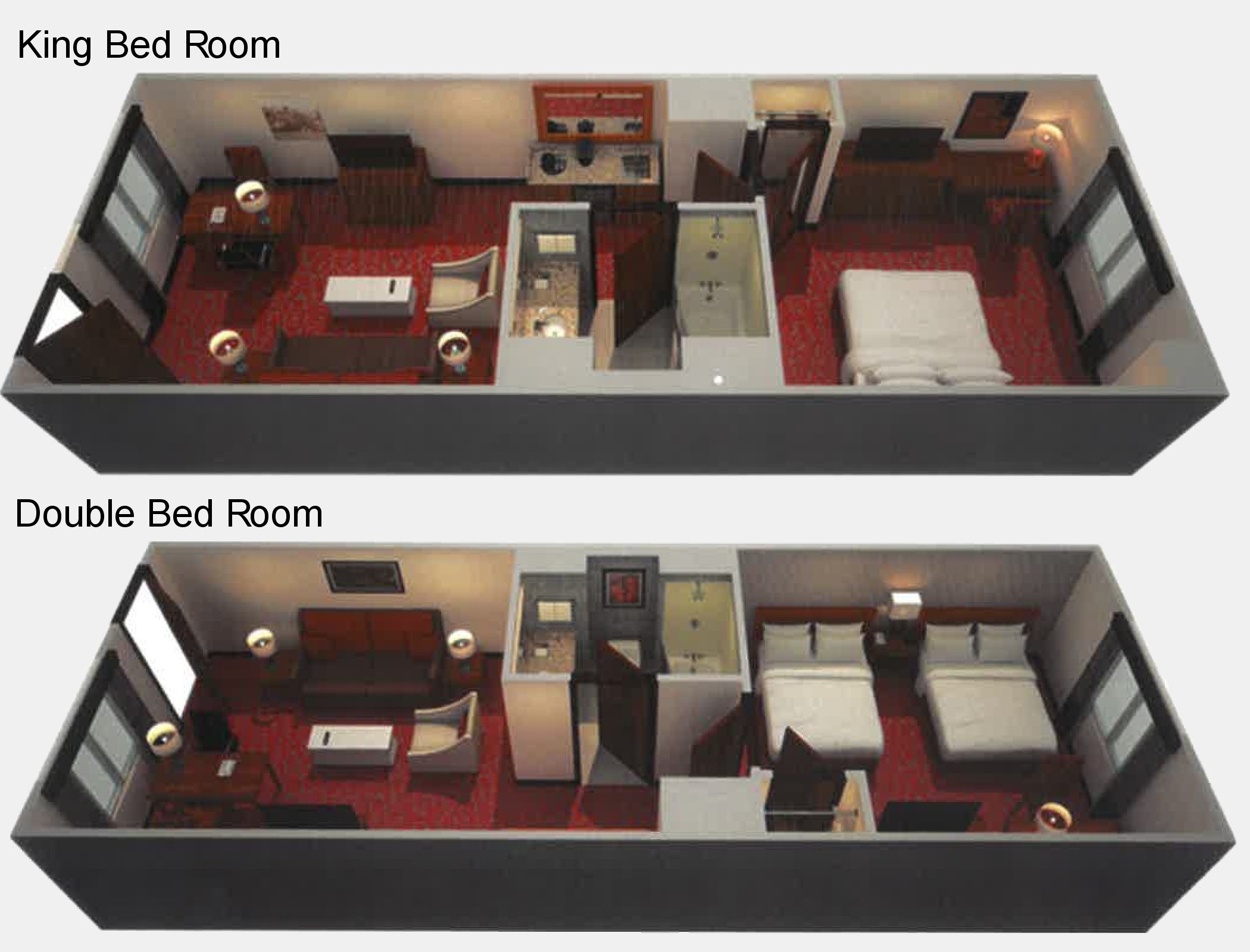
A little bit of history:
Our first show in 2005 was held at the Tulsa Embassy Suites. We called it the “Great Plains Audiofest” and it was there in 2005 and 2006. We decided to move the show to Dallas in 2007, and changed the name to “Lone Star Audiofest.” We initially held the show at Embassy Suites Market Center in 2007, and then moved to Embassy Suites Park Central in 2008, where it was held until 2019. We moved the show to Embassy Suites Galleria in 2020.
When choosing where to go in 2020, we evaluated Market Center, Park Central, Love Field, Frisco and Galleria. All were Embassy Suites properties. We settled on them a long time ago because of the two-room layout. We also like the free breakfasts and happy hour from 5:30 to 7:30. How fun is that? A two-hour happy hour!
We had a good run at the Park Central property, but it had been getting a little run down, so we had considered moving for the past year or two. We liked our old familiar spot, but between the decline in the neighborhood and the increasingly worn out furnishings there, we were getting ready to move.
And then John Busch of Manzanita Audio Solutions gave us the nudge at the last show in 2019 – He threw down the gauntlet and wrote Hilton corporate about the condition of the Park Central property. So they sold it.
No kidding! Hilton sold the property to Interstate Hotels and Resorts.

At first, we were hopeful they might improve the property, so we considered staying. But upon investigation in October 2019, they hadn’t updated the rooms yet and I’m not entirely sure they will, certainly not to the level we would want. They can’t improve the neighborhood, which has become a little bit “wrong side of the tracks.” So they were out of the running.
But we’ve always liked the Embassy Suites properties. I had found that way back in 2005 when I searched for hotels for the first shows in Tulsa. Same thing when we moved it to Dallas, where we looked at many other options, but came back to the Embassy Suites. The way they have a sleeper room with a door separating it from the “living room” makes these suites perfectly suited for exhibitors at the show. The living room becomes a show room for our sound gear, and the door to the sleeper room provides privacy for personal effects.
So I looked at Market Central again. Truth is, it is very much like Park Center right now. I don’t mean to be insensitive, but the homeless are everywhere in that area. There is a “homeless neighborhood” at the expressway turnaround, under the bridge that supports the highway right next to the hotel. So while I empathize with the plight of those unfortunates, I don’t think that’s where we want the show to be.
Love Field is a nice property, and it is similar in size to both Park Central and Market Center. Each of these three properties has eight stories with approximately thirty rooms per floor. Frisco is a nice property too, but it is considerably more expensive, at over $200/night. All the others are in the $120-$140 range.
Then there was Galleria. What attracted me to that property is it is a little smaller, being only six floors. It feels more suitable for our show. It is also in a nicer neighborhood, one that I hope won’t decline for years to come. Galleria has two ballrooms (Remington I and II) and a conference room, so we can have seminars there and exhibitors needing larger rooms can take advantage of those. And it has the same free breakfasts and happy hour that we have enjoyed.
The rooms are almost exactly like Park Central, so if you’re familiar with past shows, you’ll feel comfortable with the room layout. See the room layouts available (shown above) One difference is that all rooms on each floor are the same. At Park Central, there were four rooms on each floor (near the corners) that were a little larger. This isn’t the case at Galleria. They’re all the same there, with only very minor differences between rooms. Some have two double beds, and some have a single king size bed, for example. They also have handicap-accessible rooms. But for the most part, the rooms are all almost the same, especially in the living room.
The cost will be $120.00 per night. So that keeps us at an affordable price point. As usual, each exhibitor will book their own room. The hotel staff will keep us all on the same floor, unless we fill a floor and must spill over onto another.
There are 24 rooms on each floor that are great for exhibitors, all facing the atrium. There are an additional 7 rooms on each floor that are down a hall at the ends. Those aren’t desirable for exhibitors, but may be used by LSAF guests. The hotel knows this and will avoid placing us in those rooms. The rooms down the halls at the ends are x00, x01, x08, x09, x16, x24 and x25, where “x” is the floor number. All the other rooms facing the atrium are nearly the same and are perfect for exhibitors.
2019 Show Reports
Attendance was noticeably higher this year, especially on Friday. We hand out free AudioXpress magazines each year and this year we ran out by midday Friday. So thanks to everyone for coming to the show!
There were storms the week preceding the show in Texas, Oklahoma, Arkansas and Missouri but they cleared out on Thursday. The whole weekend was beautiful!
We had our usual eclectic mix, with lots of high-end and quality-obsessed DIY gear represented. This is so typical of LSAF, and has become what people expect to see and hear.
Price points were varied too, with many rooms showing affordable gear and some rooms with systems more expensive than most peoples’ homes. So we truly had something there for everyone!
See the show reports for this and other previous shows:
- 1
- 2